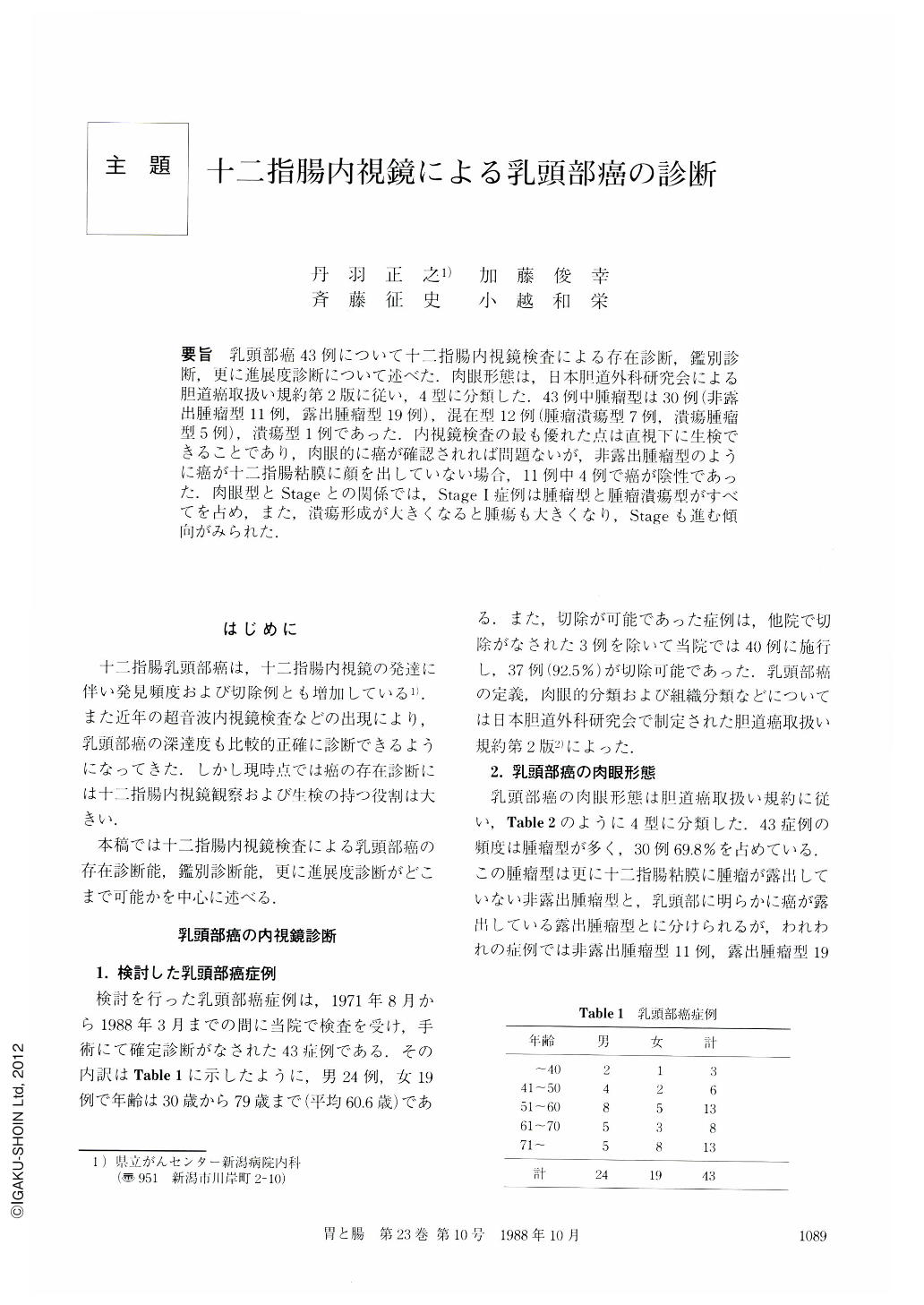Japanese
English
- 有料閲覧
- Abstract 文献概要
- 1ページ目 Look Inside
要旨 乳頭部癌43例について十二指腸内視鏡検査による存在診断,鑑別診断,更に進展度診断について述べた.肉眼形態は,日本胆道外科研究会による胆道癌取扱い規約第2版に従い,4型に分類した.43例中腫瘤型は30例(非露出腫瘤型11例,露出腫瘤型19例),混在型12例(腫瘤潰瘍型7例,潰瘍腫瘤型5例),潰瘍型1例であった.内視鏡検査の最も優れた点は直視下に生検できることであり,肉眼的に癌が確認されれば問題ないが,非露出腫瘤型のように癌が十二指腸粘膜に顔を出していない場合,11例中4例で癌が陰性であった.肉眼型とStageとの関係では,Stage Ⅰ症例は腫瘤型と腫瘤潰瘍型がすべてを占め,また,潰瘍形成が大きくなると腫瘍も大きくなり,Stageも進む傾向がみられた.
Development in instrumentation and technology of duodenoscopy made it easier to find cancers of the duodenal papilla. Accordingly, we have increasingly experienced resectable cases of these cancers.
Diagnosing the depth of cancer invasion, however, is for the most part dependent on endoscopic ultrasonography, doudenoscopic observation and biopsy. These procedures play an important role in defining cancer of the duodenal papilla.
The total of 43 cases of cancer of the duodenal papilla which was confirmed by surgical operation or autopsy were examined in this paper regarding clinical diagnosis, differential diagnosis, and evaluation of cancer extension.
According to the “General Rules of Surgical Studies on Cancer of Biliary Tract” by Japanese Biliary Surgical Society, cancers of the papilla were divided endoscopically into the following types; 30 cases of tumor type (11 cases of non-exposed type, 19 cases of exposed type), 12 cases of mixed type (7 of tumor with ulcer type, 5 of ulcer with tumor type) and one case of ulcer type.
False negative cases which were proved by endoscopic biopsy occurred most frequently among non-exposed tumor type (4 of 11 cases). All cases of small tumor with the diameter less than 10 mm belonged to Stage I. Tumor with apparent ulceration indicated relatively advanced cancer stage.

Copyright © 1988, Igaku-Shoin Ltd. All rights reserved.


